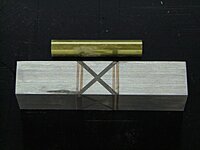I have a set of kits, called Celticus, from WoodPenPro IIRC. I bought them some time ago, and misplaced them, and found them recently. I have some in the full size as well as the junior size. I figured a Celtic Knot style blank would be ideal for celtic-styled pens. I will be doing some experimentation with just wood to start, but, for these kits, I would really like to include some brass layers in the knots as well. There are plenty of resources out there on making a celtic knot with just wood. I am curious if anyone has tried with metal layers as well, though, and if there are any resources that might help in constructing such a blank.
Thanks!
Thanks!

